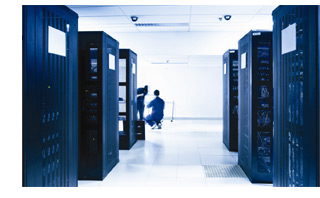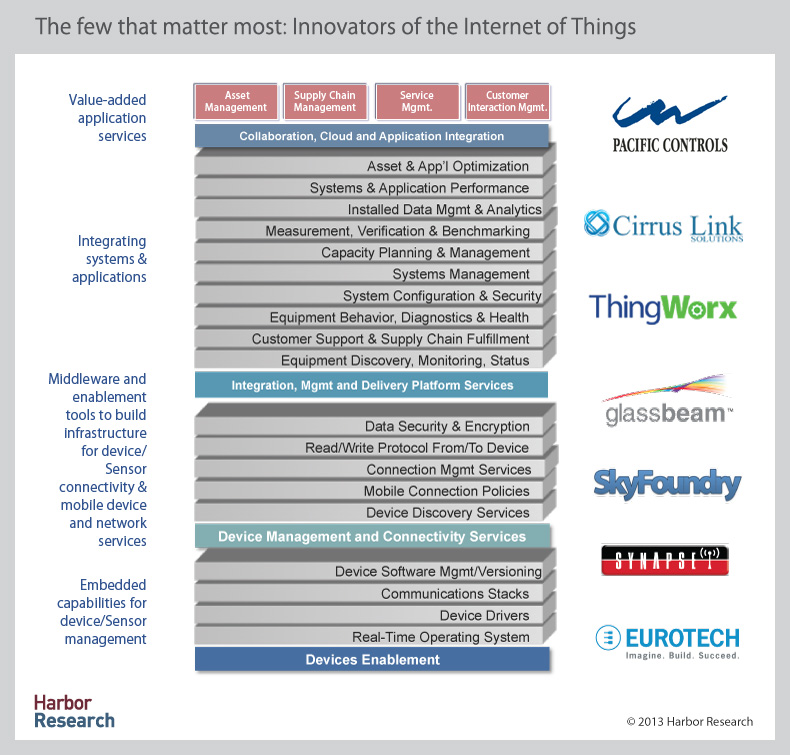
Press Releases
Opportunities: The future of real time intelligence
What's required when traditional computing meets the real world?

Cloud services, mobility, machine-to-machine (M2M) and related managed services are beginning to combine to create new modes of business intelligence, collaboration and services delivery. However, experience tells us IT and Telco players really do not understand how to translate the value of computing and networks into the real [physical] world. They are clueless when it comes to integrating ICT with real time intelligent infrastructure (e.g. sensors, machines, etc.).
So how will traditional computing meet the real world?
We can make a computer capable of beating the reigning genius of chess, but we can’t make a robot capable of walking across the street as well as any normal two-year-old child.
The real world is not a strictly regulated, closed system like a chess game. Sensing a player’s moves on a wired chessboard and responding quickly and intelligently is one thing. Sensing—and physically responding to—reality (stones, curbs, potholes, pedestrians, oncoming cars) is quite another.
In fact, the entire artificial intelligence (AI) industry collapsed largely because it was unable to meet the unrealistic public and investor expectations generated by non-real-world computing triumphs like those of IBM’s chess-playing machines. Of course, digital computing has radically transformed human affairs. But so far, that transformation has taken place on the computer’s terms. The marvels of computing have taken place in rigidly regulated, closed systems; so far, IT has floated blissfully above the profound messiness of reality. If you want the benefit of computing, you sit down at your computer.
Once at the computer, you do things the way the computer expects them to be done. There’s a big learning curve, and you’re stuck in front of a screen. If your hardware and software are decently designed, the experience feels relatively “natural” after a while—but only because you, the amazingly adaptable human being, have adapted to it.
To this day, IT is like a baby in diapers—cared for by people, coddled by people, tolerated by people. And rather astonishingly, most people don’t expect IT to get out of its diapers. They expect it to get cheaper, faster, easier to lift, and perhaps more virtual and entertaining, but they don’t expect it to grow up.
Given the immature state of today’s real-world systems, most people have trouble grasping the power and importance these capabilities could potentially enable.
So, what’s required?

The intersection of cloud computing, big data and intelligent device connectivity creates new values across the business and public systems spectrum. Cloud computing services and large scale data management infrastructure services will increasingly dominate ICT systems and services development. Coupled with the maturing of M2M and the “Internet of Things” technologies, these collective technology trends are transforming enterprise and public sector systems.
This convergence is informing significant new modes of service delivery and customer value creation. However, to leverage the full potential of this opportunity, customers will need new tools, technologies and knowledgeable providers to foster adoption. This is not something we can hope for or expect to originate from traditional IT and network services providers.So who will be the catalyst?

Enter a new generation of players to leverage true “living” intelligence

Effectively combining sensor and device networking technologies with cloud services and data management technologies will help organizations address the key challenge of optimizing the value of their balance sheets, allowing them to move beyond financial assets and liabilities to their physical assets and liabilities (like electric grids or hospitals) and then to their intangible assets and liabilities (like a skilled workforce or brand). “Real-time awareness” is driving the deployment of new analytic tools to address “big data” opportunities.
Analyzing and storing the massive amounts of data that will be received is only possible with extensible and adaptable systems. Analytics technologies are the critical tools for deciding which alternative courses to pursue, either automatically through the application of knowledge and learning. To address big data opportunities seismic leaps will be necessary in the data flow and analytical inputs in a world of vastly expanded real-time awareness. The traditional approaches to data discovery and systems intelligence have three failings: they can’t provide a holistic view of these diverse data types; the types of intelligence tools available to users are, at best, arcane and typically limited in use to “specialists” and all of this still, for the most part, occurs in a “batched” not real time data warehouse.
We need new tools to liberate the intelligence in the world of connected things. Tools need to be able to conduct a search or query that acts on unstructured, transactional and real time data simultaneously. This would allow users to determine where deeper analytics or the creation of an ad hoc business process can add value.
Given the immature state of today’s real-world systems, most people have trouble grasping the power and importance these capabilities enable. The ability to detect patterns in data is the holy grail of smart systems and The Internet of Things because it allows not only patterns but a whole higher order of intelligence to emerge from large collections of ordinary data. The implications are obviously immense.
The world needs an entirely new approach that avoids the confinements and limitations of the today’s differing data types and tools. That allows data to maintain their fundamental identity while bonding freely with other data. Facilitating discovery, based on data and information accessibility and cumulative systems intelligence. The migration of traditional enterprise and process applications to cloud computing architectures will allow these apps to be adapted to business scenarios, with specific components pushed down to intelligent devices where they can execute a specified action. Big Data and new business intelligence tools will drive enormous productivity and efficiency gains.
Glen Allmendinger
President
Harbor Research, Inc.
About Harbor Research Inc.
Founded in 1984, Harbor Research Inc. has more than twenty five years of experience in providing strategic consulting and research services that enable our clients to understand and capitalize on emergent and disruptive opportunities driven by information and communications technology. The firm has established a unique competence in developing business models and strategy for the convergence of pervasive computing, global networking and smart systems. © 2012 Harbor Research, Inc. All rights reserved.
www.harborresearch.com
About Pacific Controls
Pacific Controls (PCS) provides ICT enabled managed services and converged engineering solutions for buildings and infrastructure projects globally. PCS has pioneered the technology for Smart Cities in which buildings and infrastructure are managed centrally to increase sustainability, leveraging the ICT infrastructure of telecom operators around the world.
www.pacificcontrols.net
